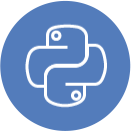Our Alumni Work At

"AI to contribute $16.1 trillion to the global economy by 2030. With 133 million more engaging, less repetitive jobs AI to change the workforce." - (Source). Data Science with Artificial Intelligence (AI) is a revolution in the business industry.. AI is potentially being adopted in automating many jobs leading to higher productivity, less cost, and extensible solutions. It is reported by PWC in a publication that about 50% of human jobs will be taken away by the AI in the next 5 years.
There is already a huge demand for AI specialists and this demand will be exponentially growing in the future. In the past few years, careers in AI have boosted concerning the demands of industries that are digitally transformed. The report of 2018 states that the requirements for AI skills have drastically doubled in the last three years, with job openings in the domain up to 119%.
FAQs
Since Lucknow is the capital city of Uttar Pradesh, it is nourished with a lot of emerging startups and IT firms, which recruit professionals continuously, thus providing ample placement opportunities to students.
The basic eligibility criteria to enroll in a data science course is the fundamental knowledge of programming and coding along with an undergraduate degree.
In this blended program, you will be attending 184 hours of classroom sessions of 4 months. After completion, you will have access to the online Learning Management System for another three months for recorded videos and assignments. The total duration of assignments to be completed online is 150 hours. Besides this, you will be working on a live project for a month.
Yes, non-IT background students can also join data science courses as these institutes start the training from the ground level, allowing people to develop a strong foundation.
Yes, there are practical assignments and course materials provided to the students so that they can study at their own pace.
Yes, expert training and mentorship along with career guidance are provided to the students by experienced professionals working in big positions in the city. This is done to duly place all the students in their dream jobs.
Yes, projects are provided on a real-time basis to the data science students with the collaboration of the local industries and startups of the city. These help students to handle theoretical knowledge in the practical world.
Each classroom session is recorded on video and stored in our Learning Management System AiSPRY. You will be assigned a dedicated login to AISPRY. You can access the video sessions from AiSPRY.
This is excellent data science for beginners. 360DigiTMG is the best institute for data science training in Lucknow. The course begins with an introduction to concepts in mathematics, statistics and data science. Students receive instruction in the world's most popular languages - Python and R.
The topics included in this course are
- Introduction to Python and R programming
- Exploratory Data Analysis
- Inferential Statistics
- Probability Distribution
- Data Visualization<
- Hypothesis Testing
- Data Mining Supervised Learning
- Predictive Modelling
- Regression Analysis
- Data Mining Unsupervised Learning
- Clustering
- Dimension reduction
- Association Rules
- Machine Learning
- Text Mining
- Natural Language Processing
- Neural Networks
- Deep Learning
- Black Box Techniques - SVM
- Forecasting/ Time Series
The general prerequisites for a data science course in Lucknow would ideally be limited to the basics of statistics, programming—preferably Python or R—and data manipulation. A background in mathematics or computer science may help.
No, only the advanced-level data science courses may need coding knowledge. The beginner-level courses teach the fundamentals of coding from scratch.
The beginner-level data science courses in Lucknow range from around 4 months but the advanced level courses may range from 10 months or more than a year.
Lucknow provides an amazing plethora of job opportunities as the city is flooded with startups and IT firms who are eagerly hiring professionals for data science roles.
Choosing Lucknow for data science courses has advantages in terms of emerging tech infrastructure, affordability of living costs, local industry connections, and a budding educational ecosystem, hence offering a well-balanced and cost-effective learning environment.
A data scientist in Lucknow can earn a minimum of 7 lakhs per annum at beginner-level jobs and can earn higher if the person holds any specialization.
Enrolling in Data Science courses in Lucknow opens an avenue for career growth, industry-relevant skills, and practical training, along with the possibility of connecting to the growing local IT and tech job market.
We provide end to end data science placement assistance after the internship is over. We help in resume preparation and conduct mock interviews. We also float your resume to several reliable placement consultants with whom we have a long association.
Yes. On submission of all assignments, you will receive a Course Completion Certificate. A sample of the certificate is available on our website for your reference.
This Certificate is valid lifelong. 360DigiTMG has a pay once repeat many times offer on this course. You pay once for the course and can repeat it many times in the future for free. This helps you adapt to technological changes and software updates in the course of your career.

Field of data scientist jobs in Lucknow
Over 21 percent of data scientist jobs are also available for new graduate applicants. Yes, this is the right time to learn data science and it will be forever as major IT companies need more than 80,000 openings for Jobs in data science.

Salary for data scientist in Lucknow
The average salary of a data scientist in big IT firms or local startups ranges from around 5 lakhs to 6 lakhs. Junior data scientists can earn more than the freshers whereas senior data scientists can earn more than 7 lakhs per annum.

Projects of data science in Lucknow
In Lucknow city, most of the data science projects are initiated by the Indian government in different sectors such as Agriculture, Retail, Media, Healthcare, Transportation, and so on.

Role of open-sourced tools in analytics
The open-sourced tools in analytics are those tools that have a very simple and user-friendly interface with easy-to-use features which helps analysts to handle large and complex datasets easily and simply. For example, Python is an excellent open-source tool.

Modes of training for data science
The modes of training for data science are both offline classroom mode and online mode to offer ease of education to students and professionals. These courses also provide training on industry-relevant topics.

Industry applications of data science
It finds applications in various industries for the process optimization of operations, enhancing customer experience, predicting trends, improving the art of decision-making, and fueling innovation. These include key sectors of finance, healthcare, retail, and manufacturing.
Talk to your program advisors today!
Get your profile reviewed

